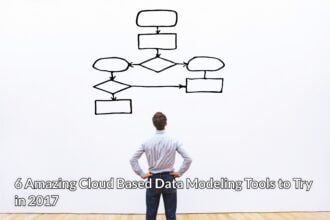Recently, I started a new project which has a database component. I looked around for some visual data modeling tools, and I settled on just using the diagrams capability of SQL Server. Since the client is using SQL Server, it was simple to download SQL Server Express and get started using their diagramming tool.
After creating a bunch of tables, I learned that SQL Server Database Diagrams do not produce the Data Definition Language (DDL) to create the database. Instead, the tables are created in sync with the diagram. Furthermore, SQL Server does not have a command that creates the DDL for an entire database. Right clicking on two dozen tables is cumbersome. But even worse, it would not provide complete DDL, since the table DDL does not include index definitions.
I have seen some debate on the web about the merits of graphical tools versus text DDL. Each has their advantages, and, personally, I believe that a decent database tool should allow users to switch between the two. The graphical environment lets me see the tables and their relationships. The text allows me to make global changes, such as…
Recently, I started a new project which has a database component. I looked around for some visual data modeling tools, and I settled on just using the diagrams capability of SQL Server. Since the client is using SQL Server, it was simple to download SQL Server Express and get started using their diagramming tool.
After creating a bunch of tables, I learned that SQL Server Database Diagrams do not produce the Data Definition Language (DDL) to create the database. Instead, the tables are created in sync with the diagram. Furthermore, SQL Server does not have a command that creates the DDL for an entire database. Right clicking on two dozen tables is cumbersome. But even worse, it would not provide complete DDL, since the table DDL does not include index definitions.
I have seen some debate on the web about the merits of graphical tools versus text DDL. Each has their advantages, and, personally, I believe that a decent database tool should allow users to switch between the two. The graphical environment lets me see the tables and their relationships. The text allows me to make global changes, such as:
- Changing all the SMALLDATETIME data types to DATE when I go to a commercial version of SQL Server. The Expression version does not support DATE, alas.
- Adding auditing columns — such as user, creation date, and update date — to almost all tables.
- Adding table-specific comments.
Doing these types of actions in a point-and-click environment is cumbersome, inefficient, and prone to error. At the same time, the GUI environment is great for designing the tables and visualizing their relationships.
So, I searched on the web for a DDL program that would allow me to create the DDL for an entire SQL Server database. Because I did not find any, I decided that I had to write something myself. The attached file contains script-all-tables.sql contains my script.
This script uses SQL to generate SQL code — a trick that I talk about in my book Data Analysis Using SQL and Excel. The script generates code for the following:
- Dropping all tables in the database, if they exist.
- Creating new versions of the tables, taking into account primary keys, data types, and identity columns.
- Creating foreign key constraints on the table.
- Creating indexes on the table.
This is a very common subset of DDL used for databases. And, importantly, it seems to cover almost all that you can do using Database Diagrams. However, the list of what it is missing from fully re-creating any database is very, very long, ranging from user defined types, functions, and procedures, to the storage architecture, replication, and triggers.
The script uses the view in the sys schema rather than in Information_Schema simply because I found it easier to find the information that I needed to put the SQL together.









